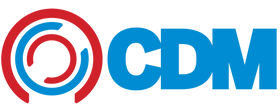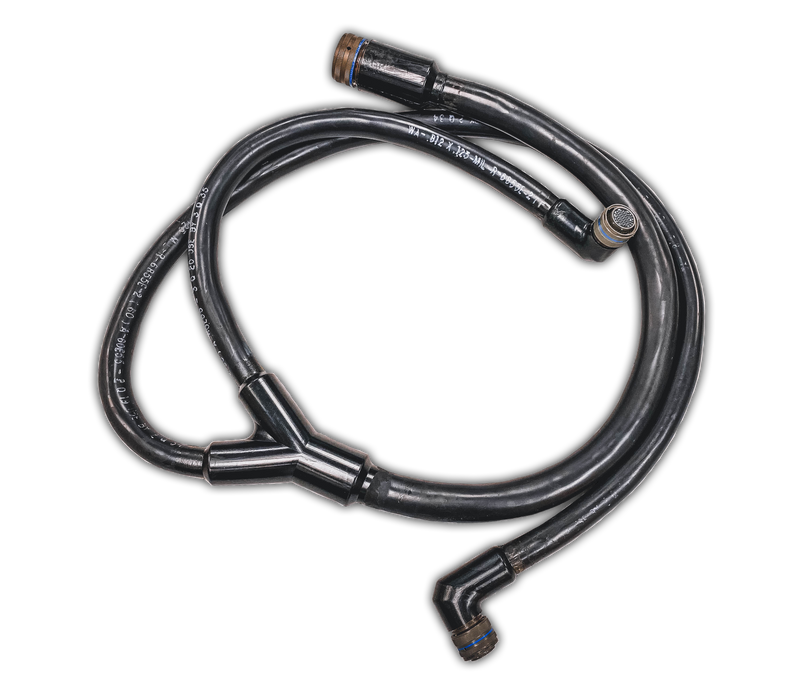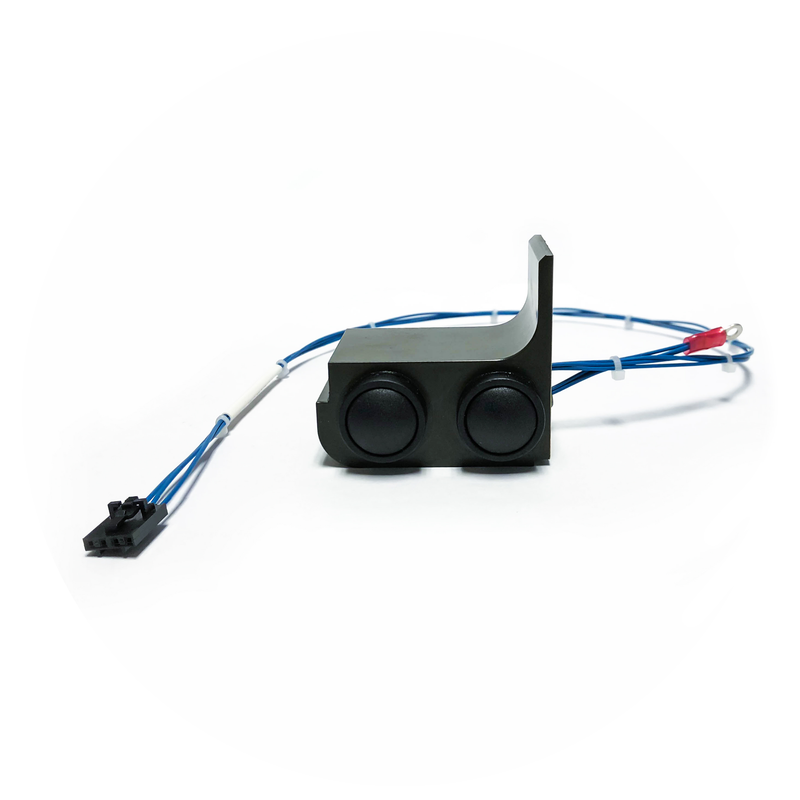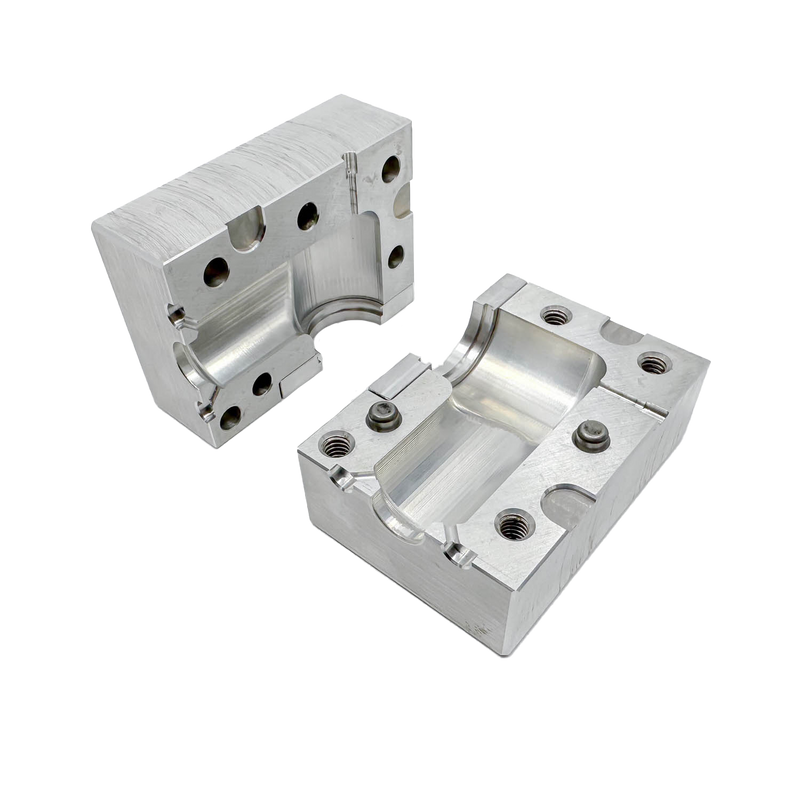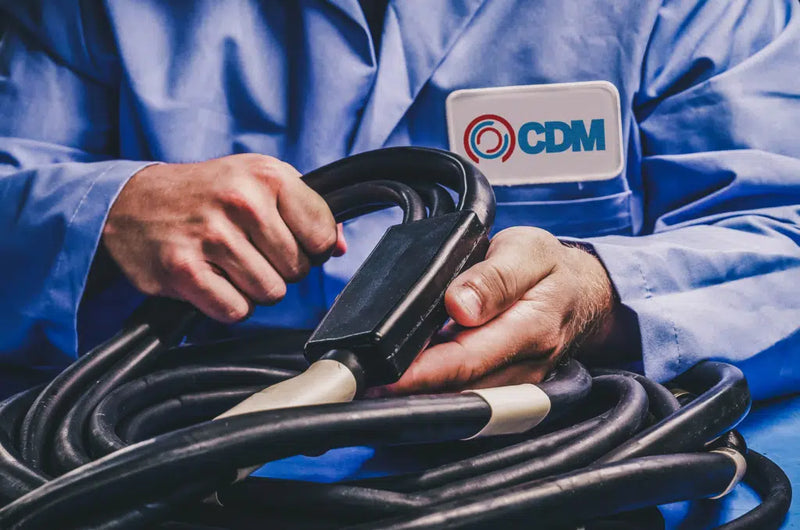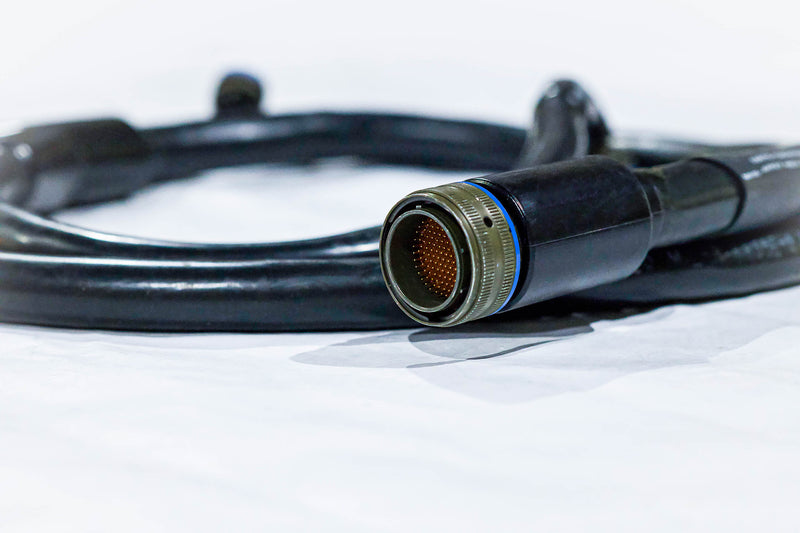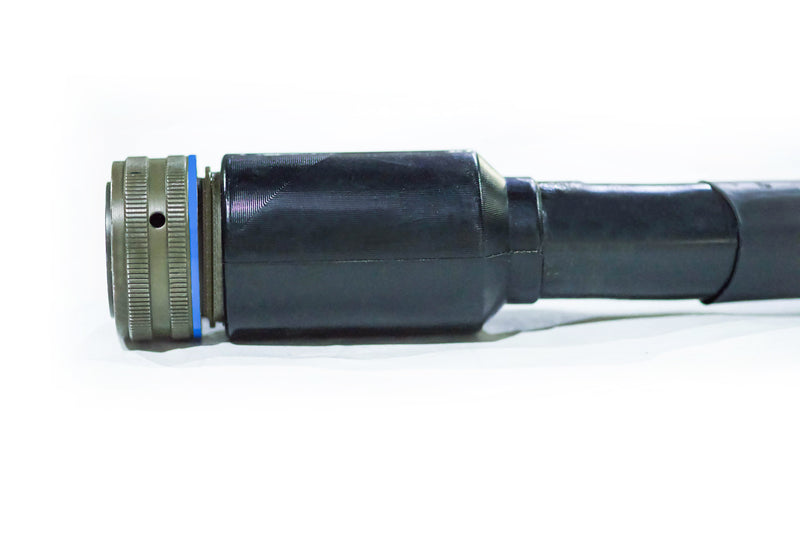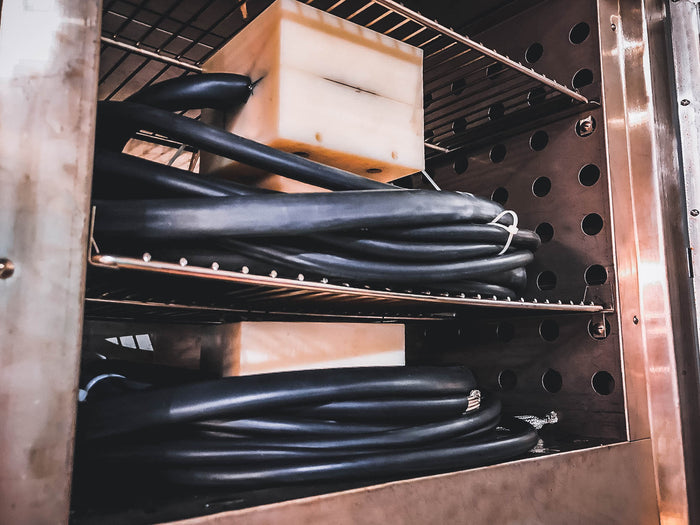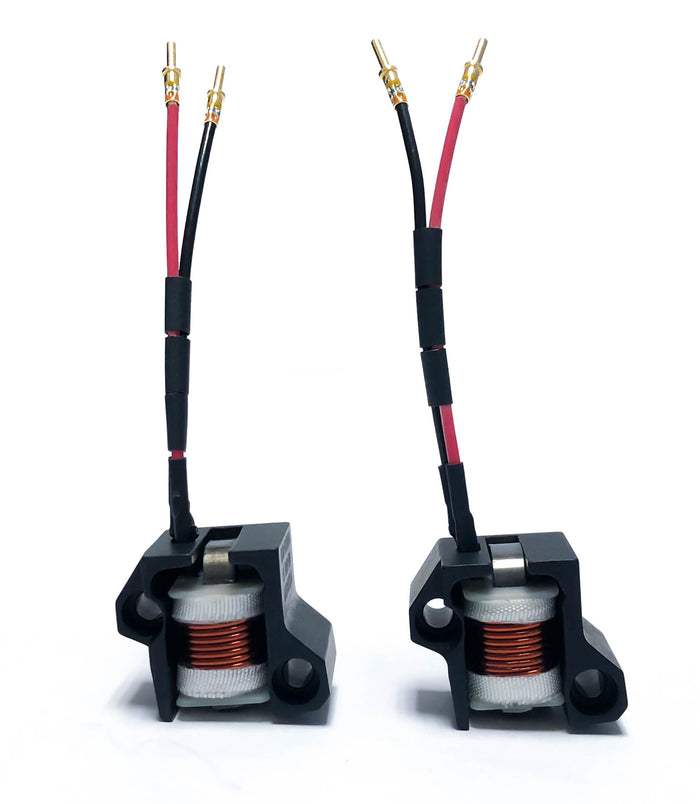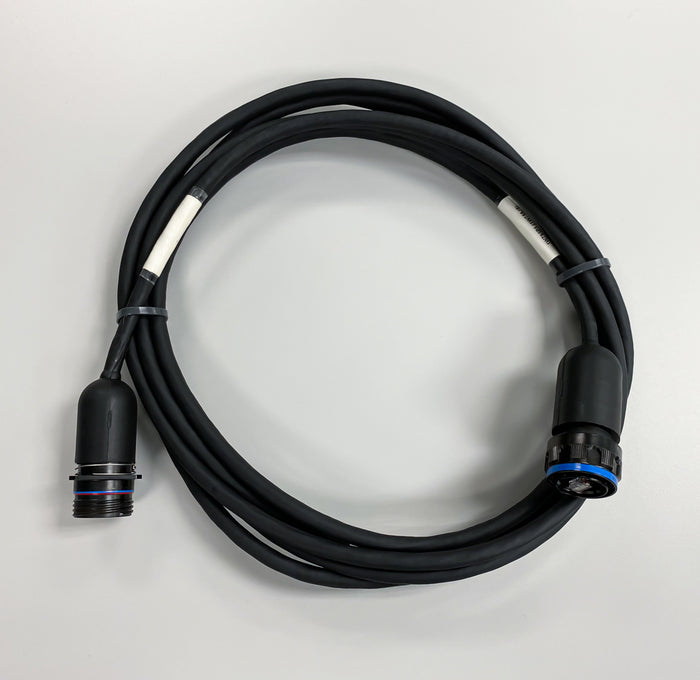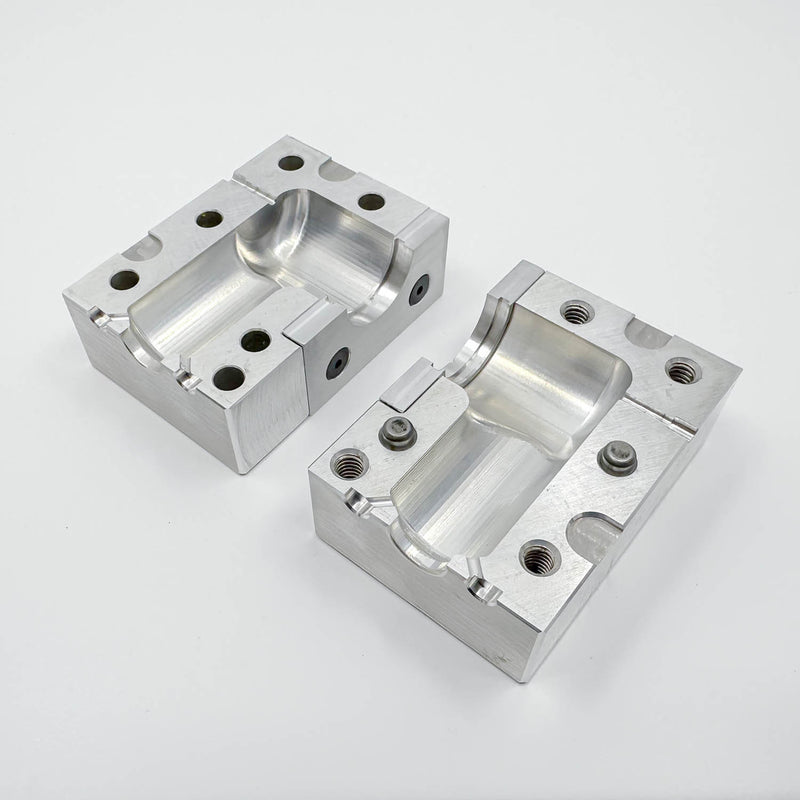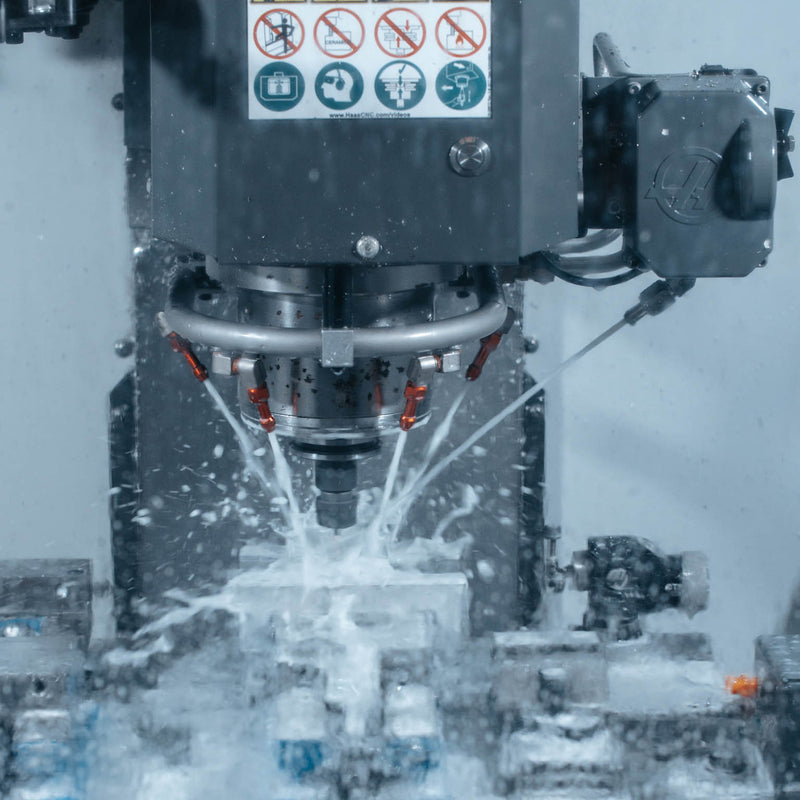All Cable Sizes and Connector Types Accommodated
Cast Molded Parts Capabilities
In-house Mold Machining
Large Material Capacity
Different Types of Overmolding
In-House Support Operations
Overmolding
CDM’s 3,000 square-foot Turnersville, NJ, machine shop supports the overmolding program by providing molds and specialty components to make the entire process seamless to customers.
-
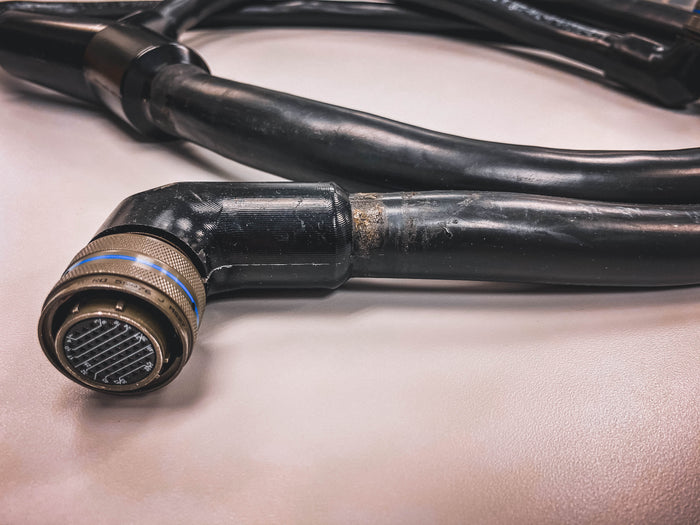
Overmolding
- Provides a complete, seamless seal at the cable/connector junction
- Provides an effective strain relief
- Unlimited size, shape and color availability
- Overmold material used is specific to the application
- American made in-house at Turnersville, NJ under 100% quality control
- Possible mold or prototype costs
-
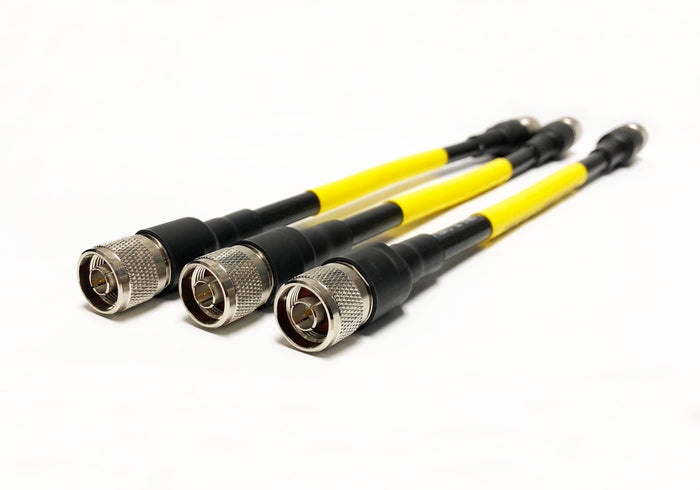
Shrink Boots
- Moisture and dust resistant, but not a true seal between the cable and connector
- Shouldn't be used as a strain relief
- Off-the-shelf sizes and shapes only, no color options
- Very limited choice of materials
- Mass produced and imported
- Budget-friendly
